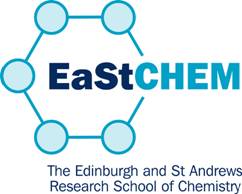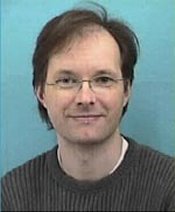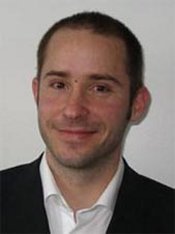Prof. Neville Richardson
The Chemistry of Molecules at Surfaces.
Understanding the fundamental aspects of the interactions of molecules with surfaces underpins many advanced technologies, such as molecular electronics, optoelectronics, sensors, heterogeneous catalysis, displays, functional coatings etc. It is a challenge to the surface scientist to unravel the intricacies of these interactions and to design novel systems to exploit molecular and surface properties to advantage. Multifunctional molecules at surfaces display a rich and varied chemisorption behaviour. Our current work is focused in the following areas: The interaction of polyfunctional copper chelating agents and corrosion inhibitors with copper single crystals; The adsorption of small molecules on copper clusters; ordered molecular networks stabilised by H-bonding or covalent bonding on metal surfaces; Early stages of polymer formation following surface adsorption. Key techniques are scanning tunneling microscopy and surface vibrational spectroscopies.
Dr. Chris Baddeley
Heterogeneous Chemistry at Surfaces.
Selectivity, the ability to selectively produce a desired product in a catalytic reaction, is arguably the most important consideration in current and future industrial catalysis. A very important example is in the production of enantiomerically pure chiral molecules for use in the pharmaceutical industry. My research focuses on understanding the surface chemistry underpinning existing enantioselective heterogeneous catalysts and to develop strategies towards the design of new catalysts of this type. A major focus is the controlled construction in two dimensions of H-bonded or metal organic frameworks or covalent architectures that are functionalized strategically in order to interact enantioselectively with pro-chiral reagents. Another strategy for improving catalytic selectivity involves the use of bimetallic catalysts. In this area, my research focuses on understanding the enhancement in selectivity achieved on alloys compared with monometallic systems. Ion scattering methods coupled with STM are used to characterize the composition and structure of surfaces. In addition, we employ thermal desorption techniques and surface vibrational spectroscopy to characterize the adsorption properties of model catalyst surfaces.
Dr. Manfred Buck
Self assembled structures and molecular electronics.
The extent to which effects intrinsic to the nanoscale can be exploited is critically dependent on the availability of strategies and tools that bridge the gap between the micro and nanoworlds and enables the routine generation of ultrasmall structures, ultimately on the sub-5 nm scale and with atomic precision. Working towards this goal, my research focuses on molecular self-assembly at surfaces and electrochemistry which, both separately and in combination, offer intriguing possibilities for the nanoscale beyond what is possible by bulk processes. Ranging from surface functionalisation using self-assembled monolayers (SAMs) to patterning by top-down lithographies and bottom-up strategies such as supramolecular self-assembly (hydrogen bonding and metal-organic coordination), the vision is to develop interfacial chemistry into a tool with unprecedented precision for two and three dimensional functional nanoarchitectures.
Dr. Georg Haehner
Functional Surfaces and Soft Matter.
We explore new chemistry and physics at small scales and apply this knowledge to realising advanced tools for materials sciences, the life sciences, and sensor technology. My group's efforts span from (bio)chemical investigations enabled by novel surfactants, to materials characterisation on small scales, to systematic device engineering for practical applications.
Our research-predominantly based in 'interface science'-is highly interdisciplinary and is centred at the nexus of Chemistry, Physics and Materials Sciences. The most exciting frontiers in interface science are highly cross-disciplinary. They cannot be accomplished without collaborating with other laboratories in academia and in industry, and we are closely cooperating with other research institutes and industrial partners.
One major focus of our work is the preparation of functional surfaces (e.g. for microelectromechanical systems (MEMS)) by applying ultrathin organic coatings, and their characterisation by a variety of surface analytical techniques. Another one is the development of a sensor platform compatible with microfluidics and lab-on-a-chip technologies, and enabling the study of liquid-solid interactions and the determination of liquid properties such as viscoelasticity.
Dr. Renald Schaub
Ultra microscopy of novel materials.
Our research aims at providing a better fundamental understanding of the reactivity of transition-metal and metal oxide surfaces. We examine the influence of particle size and composition, and the metal-support interaction in heterogeneous catalysis within an atomistic approach. The mastering of adsorption/desorption and reactivity at the nanoscale is of utmost importance for society, being the cornerstone for technologies in various industries, environmental protection and sustainable energy production. Surface reactivity is strongly dependent on the local atomic structure of the catalytic adsorption sites. Quantum size effects, geometrical effects, charge states, etc., determine the chemical nature of the catalysts, and ultimately their activity and selectivity. We investigate these issues with scanning probe microscopies (STM, AFM) by providing high-resolution real-space and time-resolved images of surface reactions. Strategies are then devised to properly interrogate relevant systems at the atomic scale. For instance, nano-engineering of the active sites is investigated with the aim of developing concepts that can be used for designing new catalysts. We aim at going beyond the traditional use of such instrumentation (high-magnification topography), by achieving (1) local electronic and vibrational spectroscopy (STS and IETS) of single atoms/molecules, (2) atomic and molecular manipulations, (3) fast-acquisition towards resolving dynamics at surfaces, and (4) high-pressure measurements towards catalytically meaningful studies at the gas/solid interface.





